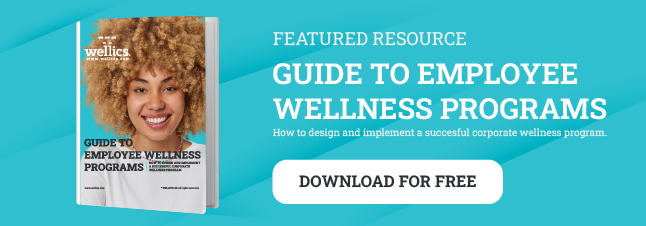Breaking the Cycle: How to Fix Workplace Stress Management Plans for Lasting Results
Workplace stress is a common problem that can have a significant impact on employee health, productivity, and morale. According to a recent study by the American Psychological Association found that nearly two-thirds of employees report feeling stressed at work on a regular basis.
While stress is a normal part of life, it can become a problem when it is excessive or prolonged. As organizations strive to boost productivity and maintain a positive work environment, implementing effective stress management plans has become a priority. However, many such initiatives often fall short of expectations, leaving employees feeling overwhelmed and unproductive.
In this article, we delve into the primary reasons behind the failures of workplace stress management plans and explore actionable strategies to address them.
Lack of Comprehensive Approach
One of the main reasons why workplace stress management plans fail is their narrow focus. All too often, companies concentrate solely on surface-level solutions like yoga classes or occasional mindfulness sessions. While these initiatives are valuable, they fail to address the root causes of workplace stress. To build a comprehensive stress management plan, companies must adopt a multi-faceted approach that combines individual and organizational strategies.
How to fix it:
a) Employee Training and Education: Offer workshops or training programs to educate employees about stress triggers, coping mechanisms, and time management techniques. When individuals understand the sources of their stress, they can take proactive steps to mitigate them.b) Flexible Work Arrangements: Empower employees with more control over their schedules through flexible working hours or remote work options. This helps reduce stress stemming from long commutes and conflicting personal responsibilities.
Insufficient Leadership Involvement:
For any stress management plan to succeed, it is crucial that organizational leaders actively participate and advocate for its implementation. When leaders are not invested in such initiatives, employees may perceive them as optional or insincere, leading to a lack of commitment among the workforce.
How to fix it:
a) Leading by Example: Encourage leaders to demonstrate healthy work habits, such as taking regular breaks, setting realistic goals, and maintaining a work-life balance. When employees witness their managers embracing these practices, they are more likely to follow suit.b) Incorporate Stress Management in Company Culture: Integrate stress management into the core values and mission of the company. Recognize and reward employees who prioritize self-care and effectively manage stress, creating a culture that values well-being.
Inadequate Evaluation and Adaptation:
Workplace stress management plans should not be viewed as static documents but as living strategies that need continuous evaluation and improvement. Failing to assess the effectiveness of these plans regularly prevents organizations from making necessary adjustments and improvements.
How to fix it:
a) Regular Employee Feedback: Conduct surveys or focus groups to gather feedback from employees about the stress management initiatives in place. This will provide valuable insights into what is working and what requires improvement.b) Data-Driven Approach: Utilize data analytics to track key performance indicators related to employee stress, such as absenteeism, turnover rates, and productivity levels. Data-driven insights will help organizations identify patterns and make informed decisions.
Effective workplace stress management plans are not quick fixes but rather ongoing processes that require commitment, collaboration, and adaptation. By adopting a comprehensive approach, involving leadership, and incorporating regular evaluation, organizations can overcome the common pitfalls and create a healthier, more resilient work environment. Prioritizing employee well-being will not only enhance productivity and efficiency but also foster a sense of loyalty and satisfaction among the workforce, leading to a more successful and thriving organization overall.
The Impact of Employee Wellbeing Platforms
Recognizing the detrimental effects of workplace stress on employee well-being and overall organizational performance, companies are increasingly turning to innovative solutions to address this challenge. One such powerful tool is the implementation of employee wellbeing platforms. These digital platforms go beyond traditional stress management approaches, offering comprehensive support and resources to employees.
Centralized Access to Stress-Reducing Resources:
Employee wellbeing platforms act as a centralized hub, providing employees with easy access to a wealth of stress-reducing resources. From guided meditation sessions and mindfulness exercises to stress management webinars and mental health toolkits, these platforms offer a diverse range of resources to cater to individual needs.
Personalized Stress Management Support:
One of the key advantages of employee wellbeing platforms is their ability to deliver personalized stress management support. Through advanced data analytics and employee feedback mechanisms, these platforms can identify specific stress triggers and patterns. Armed with this information, the platform tailors stress management recommendations and coping strategies to each employee, ensuring that the support provided is relevant and effective.
Promoting Work-Life Balance:
Work-life balance is often cited as a crucial aspect of reducing workplace stress. Employee wellbeing platforms can assist in promoting this balance by offering flexible work arrangements, telecommuting options, and digital tools that streamline tasks and save time. By empowering employees to manage their work schedules more efficiently, these platforms contribute to stress reduction and enhanced well-being.
Encouraging Social Support and Engagement:
Employee wellbeing platforms frequently include social components, such as chat groups, virtual support networks, and interactive challenges. These features foster a sense of community and enable employees to connect with colleagues facing similar stressors. The resulting social support network not only reduces feelings of isolation but also encourages open discussions about stress management and mental health, destigmatizing the topic within the workplace.
Real-Time Stress Tracking and Interventions:
Employee wellbeing platforms often incorporate cutting-edge tools, like wearable devices and stress tracking applications. These technologies enable employees to monitor their stress levels in real-time. When stress levels peak, the platform can prompt users with relevant interventions, such as breathing exercises or reminders to take breaks. These timely interventions can prevent stress from escalating and promote immediate relief.
Data-Driven Evaluation and Continuous Improvement:
One of the significant advantages of employee wellbeing platforms is their ability to collect and analyze vast amounts of data. Organizations can use this data to evaluate the effectiveness of stress management strategies and make data-driven decisions to refine and optimize the platform's offerings continually.
Employee wellbeing platforms have emerged as invaluable assets in the pursuit of effective workplace stress management strategies. By providing centralized access to stress-reducing resources, offering personalized support, promoting work-life balance, fostering social support, and incorporating real-time stress tracking, these platforms offer a holistic and forward-thinking approach to employee well-being. As companies increasingly recognize the importance of investing in their employees' mental health, embracing these innovative platforms can lead to a happier, healthier, and more engaged workforce, ultimately propelling the organization toward sustained success.
Sources:
https://www.apa.org/pubs/reports/work-in-america/2023-workplace-health-well-being








